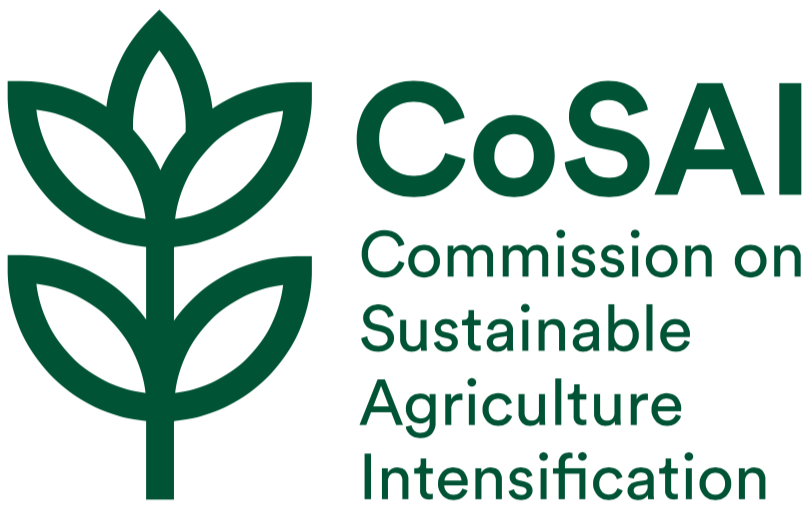An assessment of Controlled Environment Agriculture (CEA) in low- and lower-middle income countries in Asia and Africa, and its potential contribution to sustainable development
View results in:
https://www.iwmi.cgiar.org/archive/cosai/sites/default/files/CEA%20Full%20Report_0/index.pdf

Licensing of resource:
Rights subject to owner's permission
Type:
report
Author(s):
Commission on Sustainable Agriculture Intensification (CoSAI)
Publisher(s):

Description:
Controlled Environment Agriculture (CEA) is the production of plants, fish, insects, or animals inside structures such as greenhouses, vertical farms, and growth chambers, in which environmental parameters such as humidity, light, temperature and CO2 can be controlled to create optimal growing conditions.
To date, the majority of high-tech CEA installations are concentrated in high-income, industrialized countries, and the term is often associated with fully automated vertical farms in purpose-built buildings or repurposed spaces, such as disused warehouses, underground bomb shelters, office walls and basements, and even barges. Some forms of CEA are, nonetheless, being successfully taken up by entrepreneurs and established farmers in low- and lower-middle income countries, including in Africa and Asia. While the CEA techniques used in these contexts may not be so technologically advances, they show promise for their contribution to sustainable agricultural intensification (SAI).
Present trends of agriculture intensification run counter to the Sustainable Development Agenda (UN, 2015). They seek to meet the food and nutrition needs of a rapidly growing and urbanizing global population by expanding areas under cultivation, and through increased use of chemical fertilizers, weed killers and pesticides that natural resources under tremendous pressure, cause biodiversity loss, degrade water catchments and contribute to greenhouse gas emissions, a major driver of climate change (IPCC, 2019).
SAI, on the other hand, is based on methods that are productive, energy-efficient, less-resource intensive, and robust to the effects of natural hazards, pest and diseases. These methods, and the policies, institutions and financial instruments they require, must be geared towards addressing the poverty and inequality that are associated with intractable food insecurity and malnutrition, particularly in low- and lower-middle income countries.
For CEA to make a meaningful contribution to SAI in low- and lower-middle income countries, there is a need for investment in research, capacity development, enterprise initiation, scaling, and creation of enabling environments (through policies at national and sub-national levels). To attract investment and justify policy change, more information is needed on the potential contribution of CEA to sustainable development, and where, how, by whom, and for whom various technologies might be best deployed.
The purpose of this report is:
• to identify which CEA technologies merit investment, and under which conditions, to advance SAI in Africa and Asia;
• to make recommendations concerning investment in CEA technologies.
To do this, we conducted a study on the current practice and future potential of CEA in low- and lower- middle income country contexts, consisting of a literature review, document analysis, and in-depth interviews with 12 CEA practitioners in four countries: Kenya, Nigeria, India, and Sri Lanka.
Publication year:
2021
Keywords:
Controlled Environment Agriculture (CEA)
low-income countries
Asia
Africa
sustainable development
Related Resources
Ten years of promoting farmer-led innovation
This report provides a synthesis of all findings and information generated through a “stocktaking” process that involved a desk study of Prolinnova documents and evaluation reports, a questionnaire to 40 staff members of international organizations in agricultural research and development (ARD),...
Publication year:
2016Author(s):
PROLINNOVA International Secretariat
- Link to web resource
Mobiliser les potentialités de la vulgarisation rurale et agricole
Ce document présente la position de l’Organisation des Nations Unies pour l’alimentation et l’agriculture (FAO) et du Forum mondial pour le conseil rural (GFRAS) sur la place actuelle des services de vulgarisation et de conseil agricole et sur les chemins...
Publication year:
2010Author(s):
Christoplos I.
- Link to web resource
Nutritional-sensitive and sustainable agricultural development- An overview
Nutrition and Agriculture are interlinked with each other. Sustainable agricultural development is agricultural development that contributes to improving resource efficiency, strengthening resilience and securing social equity/responsibility of agriculture and food systems in order to ensure food security and nutrition for...
Publication year:
2018Author(s):
Singh K. M.
Singh P.
- Upload file
Global report on food crisis
The 2021 Global Report on Food Crises (GRFC 2021) highlights the remarkably high severity and numbers of people in Crisis or worse (IPC/CH Phase 3 or above) or equivalent in 55 countries/territories, driven by persistent conflict, pre-existing and COVID-19-related economic...
Publication year:
2021Author(s):
Food Security Information Network (FSIN)
Global Network Against Food Crises
- Upload file
The New Harvest. Agricultural Innovation in Africa
African agriculture is currently at a crossroads, at which persistent food shortages are compounded by threats from climate change. But, as this book argues, Africa can feed itself in a generation and help contribute to global food security. To achieve...
Publication year:
2015Author(s):
Juma, C.
- Link to web resource
